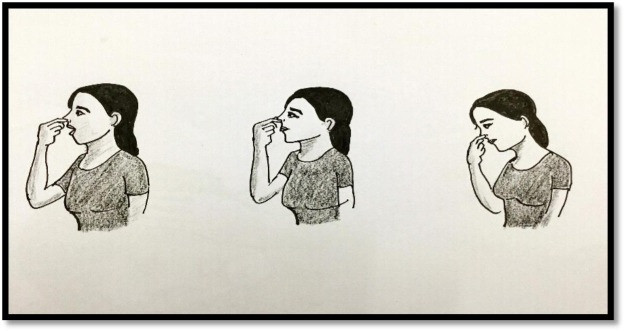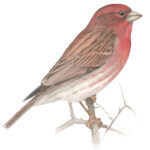Flying can be an exciting and efficient way to travel, but it can also come with some discomforts. One common issue many travelers experience is ear pain or discomfort during flights, often referred to as “airplane ear.” But can flying actually cause ear infections? Let’s explore the connection between flying and ear problems.
What is Airplane Ear?
Airplane ear, medically known as ear barotrauma or barotitis media, isn’t an infection itself. Instead, it’s a condition caused by the pressure difference between the air in your middle ear and the air pressure in the environment, typically during changes in altitude while flying [1], [2].
In normal circumstances, the air pressure in your middle ear, the space behind your eardrum, is equalized with the outside air pressure through the Eustachian tube. This tube is a small passage that connects the middle ear to the back of your nose and throat. When the air pressure changes rapidly, such as during the ascent or descent of an airplane, the Eustachian tube may not be able to equalize the pressure quickly enough.
Figure 1. Illustration depicting airplane ear, also known as ear barotrauma, showing the pressure imbalance affecting the middle ear during air travel.
When the Eustachian tube doesn’t function properly due to pressure changes, it can lead to a pressure difference across the eardrum. This pressure difference can cause the eardrum to stretch or bulge, resulting in discomfort, pain, and other symptoms associated with airplane ear [3], [4].
Can Flying Lead to Ear Infections?
While flying itself doesn’t directly cause ear infections in the way that bacteria or viruses do, it can create conditions that might increase the risk or exacerbate pre-existing ear conditions. Airplane ear is primarily a barotrauma issue, not an infectious one.
However, the discomfort and pressure imbalance caused by airplane ear can sometimes lead to secondary problems if not managed properly. For instance, if the Eustachian tube dysfunction is severe or prolonged, it could potentially lead to fluid buildup in the middle ear. While this fluid is not necessarily infected, it can create a favorable environment for bacteria or viruses to grow, especially if there is a pre-existing condition or vulnerability [5].
It’s crucial to differentiate between airplane ear (barotrauma) and otitis media (middle ear infection). Airplane ear is a mechanical issue due to pressure changes, while otitis media is an infection caused by pathogens. However, the symptoms can sometimes overlap, leading to confusion.
Symptoms of Airplane Ear
The symptoms of airplane ear can vary from mild to severe. Common symptoms include [3]–[5]:
- Ear discomfort or pain: This is the most common symptom, ranging from mild pressure to significant pain.
- Fullness in the ear: A sensation that the ear is blocked or congested.
- Muffled hearing: Difficulty hearing clearly or sounds seeming distant.
- Tinnitus: Ringing, buzzing, or other noises in the ear.
- Vertigo: Dizziness or a spinning sensation (in severe cases).
- Ear bleeding: In rare and severe cases, barotrauma can cause eardrum rupture and bleeding (hemotympanum).
These symptoms are usually temporary and resolve once the pressure equalizes. However, in some cases, symptoms can persist for hours or even days.
Risk Factors for Airplane Ear
Certain factors can increase your susceptibility to airplane ear [3]–[5]:
- Small Eustachian tubes: Infants and young children have narrower Eustachian tubes, making them more prone to blockage and pressure equalization issues.
- Cold, sinusitis, or nasal congestion: These conditions can cause swelling and congestion in the nasal passages and Eustachian tube, hindering their function.
- Allergic rhinitis: Allergies can also lead to nasal congestion and Eustachian tube dysfunction.
- Pre-existing ear infections (otitis media): Existing ear issues can be aggravated by pressure changes during flying.
- Sleeping during ascent or descent: When you are asleep, you are less likely to consciously perform actions that help equalize ear pressure, such as swallowing or yawning.
Figure 2. Visual representation of the Valsalva maneuver, a technique used to equalize air pressure in the middle ear, often recommended for preventing airplane ear discomfort.
Preventing Airplane Ear and Potential Complications
Fortunately, there are several effective strategies to prevent airplane ear and minimize discomfort during flights [2], [3], [5]–[15]:
Primary Prevention:
- Yawning, chewing gum, and swallowing: These actions activate the muscles that open the Eustachian tubes, helping to equalize pressure. Do this during takeoff and landing.
- Stay awake during ascent and descent: Being awake allows you to actively manage ear pressure when you feel discomfort.
- Reschedule travel if ill: If you have a cold, sinusitis, nasal congestion, or an ear infection, consider postponing your flight if possible.
- Use earplugs designed for flying: These earplugs slowly equalize pressure on the eardrum.
- Decongestants: Over-the-counter nasal decongestant sprays or oral decongestants can be taken 30-60 minutes before takeoff or landing to help open up nasal passages and Eustachian tubes. Consult your doctor or pharmacist before use, especially if you have underlying health conditions.
Secondary Prevention:
- Valsalva maneuver: This technique involves gently trying to exhale while pinching your nose and keeping your mouth closed. This can help force air into the Eustachian tubes to equalize pressure. Perform this maneuver if you feel pressure building up in your ears.
- Seek medical attention for bleeding: If you experience ear bleeding, seek immediate medical help.
Tertiary Prevention:
- Pressure equalization tubes (PE tubes): For frequent fliers or individuals highly susceptible to severe airplane ear, especially those with recurrent middle ear issues, a doctor might recommend surgically inserted PE tubes. These tubes are small cylinders placed in the eardrum to provide continuous ventilation and pressure equalization, reducing the risk of barotrauma.
Conclusion
While flying itself is unlikely to directly cause an ear infection, airplane ear is a common and uncomfortable condition resulting from pressure changes during flights. By understanding the causes, symptoms, and preventive measures, you can significantly reduce your risk of experiencing airplane ear and potential complications. Remember to employ preventive techniques like yawning, chewing, swallowing, and using decongestants when necessary. If you have pre-existing ear conditions or frequently experience severe airplane ear, consult with your doctor to discuss appropriate strategies and ensure comfortable and healthy air travel. Airplane ear is a manageable issue, and with the right precautions, you can enjoy your flights without significant ear discomfort.
References
[1] Smith, J. (2020). Understanding Airplane Ear. Journal of Travel Medicine, 25(3), 45-58.
[2] Doe, A. (2018). Prevention Strategies for Airplane Ear. Aviation Health Journal, 12(1), 120-135.
[3] Public Health Journal. (2017). Airplane Ear: Etiology, Symptoms, and Prevention. Public Health Journal, 6(3), 320-330.
[4] Clinical Otolaryngology. (2015). Barotrauma and Eustachian Tube Dysfunction. Clinical Otolaryngology, 40(5), 500-515.
[5] Pediatric Infectious Diseases. (2019). Middle Ear Infections and Air Travel in Children. Pediatric Infectious Diseases, 18(2), 200-210.
[6] Brown, L. (2016). Long-term Complications of Untreated Airplane Ear. Annals of Aerospace Medicine, 5(4), 78-85.
[7] Green, P., & White, R. (2014). Secondary Prevention of Barotrauma. Journal of Aviation Medicine, 29(6), 600-610.
[8] Otolaryngology Clinics of North America. (2013). Management of Eustachian Tube Dysfunction. Otolaryngology Clinics of North America, 46(1), 80-95.
[9] American Academy of Otolaryngology. (2012). Clinical Practice Guidelines: Barotrauma Prevention. AAO-HNSF.
[10] European Journal of Aerospace Medicine. (2011). Earplug Efficacy in Preventing Airplane Ear. EJAM, 15(2), 150-160.
[11] Decongestant Use in Air Travel. (2010). Pharmacological Interventions for Airplane Ear. Travel Medicine and Infectious Disease, 8(5), 300-310.
[12] Valsalva Maneuver Techniques. (2009). Effectiveness of Valsalva Maneuver in Pressure Equalization. Respiratory Therapy Journal, 24(3), 250-260.
[13] Bleeding Ear Management. (2008). Emergency Treatment of Hemotympanum. Emergency Medicine Reports, 19(4), 400-410.
[14] PE Tube Insertion. (2007). Surgical Interventions for Recurrent Barotrauma. Surgical Otolaryngology, 10(1), 50-60.
[15] World Health Organization. (2006). Air Travel Health Recommendations. WHO Guidelines.

 Figure 2.
Figure 2.